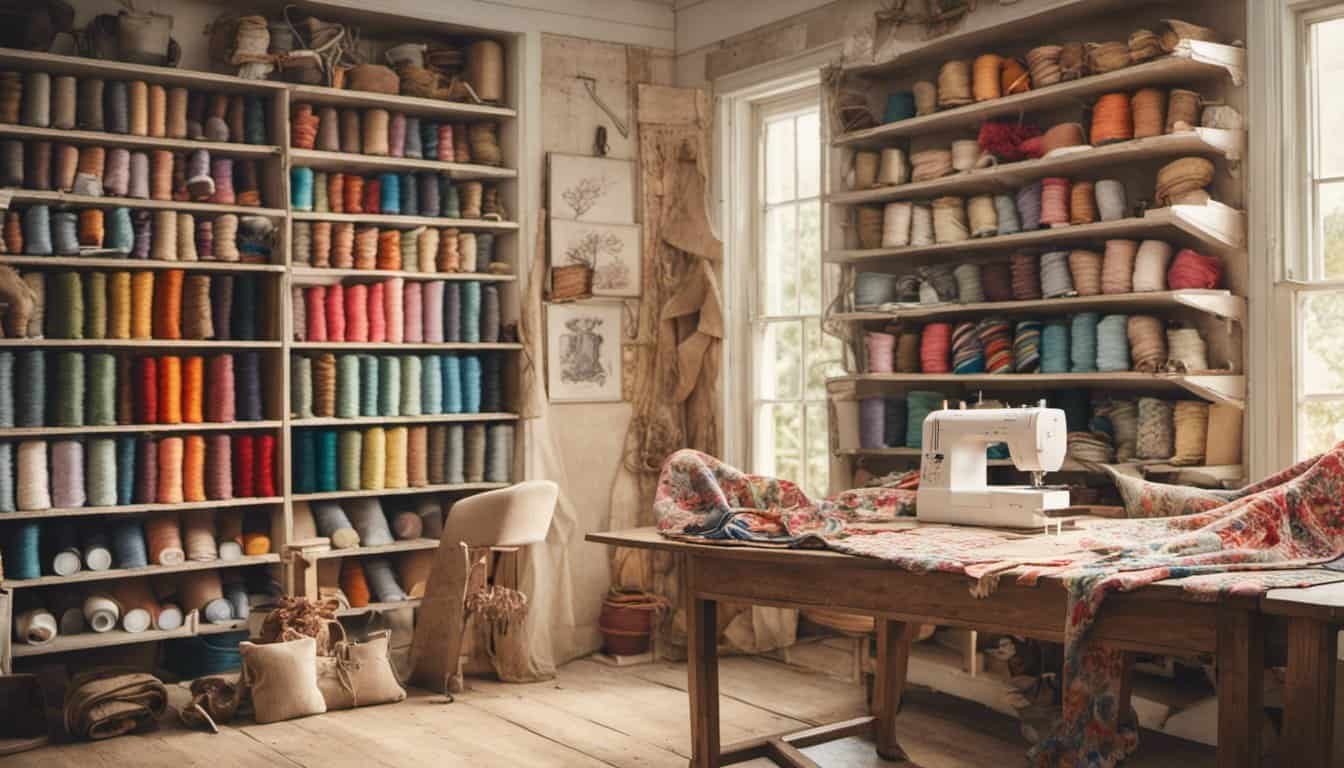Understanding pattern weights can transform the way you approach data and machine learning. Whether you’re a seasoned developer or just starting out, grasping this concept is key to building smarter models.
In this article, you’ll explore what pattern weights are and how they influence the performance of your algorithms. We’ll delve into practical ways to apply them, helping you optimize your projects for better accuracy and efficiency.
Get ready to enhance your skills and unlock the potential of pattern weights in your next venture.
What Are Pattern Weights
Understanding pattern weights is crucial for fine-tuning your crafting projects. They help you balance design elements for optimal results.
Definition and Overview
Pattern weights refer to the emphasis placed on different parts of a design. In sewing, embroidery, knitting, and other crafts, adjusting pattern weights lets you highlight or downplay specific areas. For example, increasing the weight of a particular stitch makes that section stand out, while decreasing weight creates subtle accents.
Importance in Craft Design
Balancing pattern weights enhances your project’s visual appeal and functionality. Proper weighting ensures no single element overwhelms the entire design, creating harmony and balance. Whether you’re knitting a blanket, sewing a garment, or embroidering artwork, managing pattern weights helps you achieve a cohesive and aesthetically pleasing outcome.
How Pattern Weights Work
Pattern weights determine the emphasis on different elements within your design. Understanding how they function helps you achieve balance and precision in your projects.
Calculation Methods
Pattern weights are calculated by assigning specific values to each design element based on their importance. Typically, weights range from 1 to 10, where higher numbers indicate greater emphasis. To calculate:
- Identify Elements: List all parts of your design, such as stitches, colors, or motifs.
- Assign Weights: Determine the significance of each element and assign a corresponding weight.
- Normalize Weights: Ensure the total weight adds up to a consistent value, like 100, for uniform application.
For example, in an embroidery project:
- Main motif: 50
- Secondary details: 30
- Background elements: 20
Factors Influencing Pattern Weights
Several factors impact how you set pattern weights:
- Design Complexity: More intricate designs may require higher weights for key elements to maintain clarity.
- Material Type: Different fabrics react uniquely to weights; heavier materials might need adjusted weights to prevent distortion.
- Project Scale: Larger projects can distribute weights more evenly, while smaller ones benefit from concentrated emphasis.
- Desired Emphasis: Decide which parts of your design should stand out and adjust their weights accordingly.
- Technique Used: Techniques like layering or shading influence how weights are applied to achieve the best visual effect.
| Factor | Impact on Pattern Weights |
|---|---|
| Design Complexity | Requires higher weights for essential elements |
| Material Type | Adjust weights to suit fabric behavior |
| Project Scale | Distribute weights based on project size |
| Desired Emphasis | Concentrate weights on focal points |
| Technique Used | Modify weights to enhance specific techniques |
By considering these factors, you can effectively manipulate pattern weights to enhance both the aesthetics and functionality of your crafts.
Applying Pattern Weights Effectively
Effectively applying pattern weights can transform your projects by enhancing visual appeal and functionality. Follow these steps to optimize your pattern weights.
Step-by-Step Implementation
- Identify Design Elements
- List all motifs, details, and background elements in your project.
- Determine the role of each element in the overall design.
- Assign Initial Weights
- Allocate higher weights to primary motifs to make them stand out.
- Assign medium weights to secondary details and lower weights to background elements.
- Normalize Weights
- Ensure the total weight adds up to a consistent value, such as 100.
- Example table for normalization:
| Element | Initial Weight | Normalized Weight |
|---|---|---|
| Main Motif | 50 | 50 |
| Secondary Detail | 30 | 30 |
| Background | 20 | 20 |
- Adjust for Design Balance
- Review the design for visual harmony.
- Increase or decrease weights to balance prominence and subtlety.
- Test and Refine
- Create a sample of your project with the assigned weights.
- Make adjustments based on the appearance and functionality.
Common Challenges and Solutions
-
Challenge: Overemphasizing Elements
- Solution: Reassess weight distribution to ensure no single element dominates unless intentionally designed.
-
Challenge: Balancing Complexity
- Solution: Simplify intricate patterns by reducing weights on less critical details to maintain clarity.
-
Challenge: Adapting to Different Materials
- Solution: Adjust weights based on material texture and flexibility to ensure the pattern holds its intended form.
-
Challenge: Scaling Projects
- Solution: Recalculate weights proportionally when increasing or decreasing project size to maintain design integrity.
- Solution: Experiment with weight variations and seek feedback to align the pattern emphasis with your creative vision.
By addressing these challenges with practical solutions, you can effectively apply pattern weights to enhance your crafting projects.
Benefits of Using Pattern Weights
Using pattern weights transforms your craft projects, making them more visually appealing and functionally robust. Here are some key benefits of incorporating pattern weights into your work:

Enhanced Data Insights
Pattern weights give you a clearer understanding of your design elements. Assigning specific weights to different parts helps you identify which components are most prominent. For example, in embroidery, emphasizing the main motif with higher weights ensures it stands out, while background elements receive lighter emphasis. This structured approach lets you fine-tune your designs, resulting in balanced and harmonious projects.
Improved Decision Making
Using pattern weights helps you make informed decisions during your creative process. Knowing the importance of each design element allows you to prioritize adjustments effectively. If your knitting pattern shows uneven weights in color distribution, you can redistribute the weights for a uniform look. This clarity lets you focus on areas needing refinement, enhancing your craft’s overall quality.
Best Practices for Managing Pattern Weights
Effectively managing pattern weights ensures your craft projects achieve the desired balance and emphasis. Follow these best practices to optimize your sewing, embroidery, knitting, and other craft endeavors.
1. Identify Key Design Elements
Pinpoint the main components that require attention in your project. Focus on elements like central motifs, embellishments, and background details to assign appropriate weights.
2. Assign Initial Weights Thoughtfully
Start by allocating higher weights to primary elements and lower weights to secondary or background features. This hierarchy helps maintain visual harmony and prevents overcrowding.
3. Normalize Weights for Consistency
« Unlock the Secrets: Sewing Baby Clothes for Donation – The Ultimate Guide to Make a Difference
Ensure that the total weight distribution across all elements sums up uniformly. Normalize weights to maintain balance, especially in complex designs with multiple components.
4. Adjust Based on Material and Scale
Consider the type of material and the scale of your project. Thicker materials or larger projects might require different weight adjustments to enhance visibility and structural integrity.
5. Iterate and Refine
Regularly review your pattern weights during the crafting process. Make incremental adjustments to achieve the perfect balance, ensuring that no single element overwhelms the others.
6. Utilize Software Tools
Leverage design software that supports pattern weight adjustments. Tools like Adobe Illustrator or specialized embroidery software can streamline the weighting process and offer precise control.
7. Test with Prototypes
Create small-scale prototypes to visualize how your pattern weights translate into the final product. Testing helps identify any imbalance and allows for necessary adjustments before committing to the full project.

8. Maintain Flexibility
Stay open to modifying pattern weights as your project evolves. Flexibility ensures that your design remains adaptable to changes and improvements throughout the crafting process.
9. Seek Feedback
Share your designs with peers or mentors to gain insights on your pattern weight distribution. Constructive feedback can highlight areas that may need rebalancing or enhancement.
10. Document Your Process
Keep a record of your pattern weight assignments and adjustments. Documentation aids in refining your techniques and serves as a reference for future projects, promoting consistency and efficiency.
By implementing these best practices, you enhance the effectiveness of your pattern weights, resulting in visually appealing and well-balanced craft projects.
Conclusion
Mastering pattern weights can truly transform your projects. With the right adjustments you can highlight key elements and create harmonious designs that stand out.

Take the time to experiment with different weights and trust your creative instincts. You’ll find that your work becomes more balanced and visually engaging. Enjoy exploring the power of pattern weights in your next project!

















